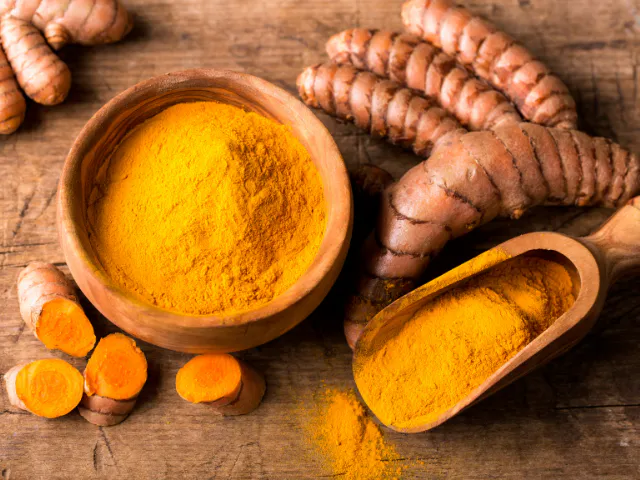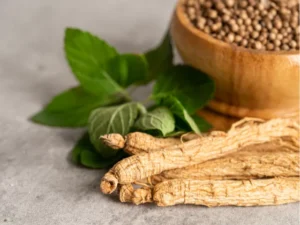There are a lot of myths and misconceptions floating around about Rajasic foods. Some people hear the word “Rajasic” and think it’s something complicated or bad for you. But don’t worry! We’re here to clear up these Rajasic food misconceptions and give you the real scoop.
In this article, we will go through some common misunderstandings about Rajasic foods, and we’ll uncover the truth together. We’ll keep things simple and easy to understand, so by the end of it, you’ll be an expert! So, are you ready to debunk some myths and learn something new?
1. Rajasic Foods are Unhealthy

Let’s debunk our first misconception: “Rajasic foods are unhealthy.” This statement is quite broad and somewhat misleading. Rajasic foods, according to Ayurveda, are those that stimulate the body and mind. Examples include coffee, tea, and spicy foods. They are known to energize and activate our systems, making us feel more alert and lively.
However, labeling all Rajasic foods as unhealthy is an oversimplification. Like many things in life, moderation is key. Consuming Raajasik foods excessively may lead to restlessness or discomfort, but enjoying them in reasonable amounts can be part of a balanced diet.
It’s essential to understand your body and its needs. If you find that a cup of coffee in the morning helps you kickstart your day, it doesn’t necessarily mean it’s bad for your health. So, let’s give these foods the credit they deserve and enjoy them mindfully as part of our diverse diet.
2. Only Non-Vegetarian Foods are Rajasic

Moving on to our next misconception: “Only non-vegetarian foods are Rajasic.” This idea might make these foods seem limited, but that’s not the case!
Rajasic foods are not just about meat or non-vegetarian items. They also include various vegetarian foods. The Rajasic category is more about the qualities of the food—like being stimulating and energizing—rather than whether it’s vegetarian or non-vegetarian.
For instance, onions and garlic are vegetarian foods, but they are also considered Rajasic because they have stimulating properties. Spices, which are plant-based, can also be Rajasic due to their activating and energizing effects.
So, it’s not about whether the food is vegetarian or not; it’s about how the food affects our body and mind. Understanding this helps us appreciate the diversity of Raajasik foods and how they can fit into various diets and lifestyles.
3. Rajasic Foods Should be Completely Avoided

Here’s another myth that needs busting: “Rajasic foods should be completely avoided.” This misconception might make Rajasic foods seem like something harmful, but that’s not necessarily true.
Rajasic foods, with their stimulating qualities, can actually be quite useful depending on one’s lifestyle and activities. For example, if someone has a very active job or does a lot of physical exercise, these foods can provide the necessary energy and stimulation.
Avoiding Rajasic foods entirely might not be practical or beneficial for everyone. It’s about finding a balance that works for your body and lifestyle. Some people might find that Raajasik foods, like coffee or spicy dishes, help them stay alert and focused, enhancing their productivity.
Remember, everyone’s body is different, and what works for one person might not work for another. It’s always best to listen to your body and make dietary choices that support your individual needs and well-being.
4. Rajasic Foods Only Affect Physical Health

Onto misconception number four: “Rajasic foods only affect physical health.” This statement is a bit one-sided because they actually influence both our physical and mental states.
Rajasic foods are known for their stimulating effects, which means they can make us feel more energetic and active. But that’s not where it ends. These foods can also affect our minds, sometimes making us feel more alert, but other times they might lead to feelings of restlessness or agitation.
It’s like when you have too much coffee, and suddenly your mind is racing with thoughts, making it hard to focus. That’s the mental impact of Raajasik foods coming into play.
Understanding that these foods can have a holistic impact, affecting both body and mind, allows us to make more informed and mindful choices about our diet, ensuring that it supports our overall well-being.
You Might Also Like:
5. All Spices are Rajasic

Let’s spice things up a bit and tackle misconception number five: “All spices are Rajasic.” Spices are the vibrant characters in the story of our meals, adding flavor, color, and personality. But are they all Rajasic? Not quite.
Rajasic spices are the ones that bring heat and intensity, like chili peppers and black pepper. They wake up our senses and get things moving. But not all spices wear the Raajasik cape. Some spices, like turmeric, are more calming and are considered Sattvic, which means they help promote harmony and balance in the body.
So, spices come in different varieties and energies, each bringing its unique touch to our meals and our bodies. Knowing the nature of each spice helps us use them mindfully to create meals that suit our needs and tastes.
6. Rajasic Foods Lead to Aggressive Behavior

Misconception number six on our list is quite dramatic: “Rajasic foods lead to aggressive behavior.” It seems like Rajasic foods are being blamed for making people angry or aggressive, but is that true?
Rajasic foods, like coffee or spicy foods, do stimulate and energize us. They can make us feel more active and alert. However, saying they directly cause aggressive behavior is a stretch. People’s reactions to foods can be quite personal and varied. While someone might feel energized, another might feel a bit restless or overstimulated.
It’s essential to recognize the individual nature of dietary impacts and not generalize that these foods will make everyone feel aggressive. Instead, understanding how different foods affect us personally can guide our dietary choices for a balanced and harmonious life.
7. Rajasic Foods are Only About Taste

Misconception seven suggests that “Rajasic foods are only about taste.” While it’s true that Rajasic foods often bring a powerful and delightful array of flavors to our meals, their role isn’t confined to tantalizing our taste buds.
Rajasic foods, due to their stimulating properties, can also influence our energy levels and mental alertness. For instance, a person might consume a Rajasic food like coffee to feel more awake and focused, not just for its taste.
Recognizing the multifunctional role of foods—beyond just flavor—allows us to appreciate their full value and make mindful choices in our diet to suit our individual needs and preferences.
8. Rajasic Foods Have No Spiritual Significance

The eighth misconception we’ll address is that “Rajasic foods have no spiritual significance.” In reality, foods, including Rajasic ones, often hold various roles in spiritual and cultural practices.
In some traditions, foods might be used intentionally in rituals or ceremonies for their energetic and activating qualities. They might be consumed to cultivate certain energies or states of mind that align with specific spiritual practices or objectives.
Understanding the broader cultural and spiritual contexts of Raajasik foods enriches our appreciation of their significance and roles in diverse practices and traditions. It reminds us that food can be more than just physical nourishment, often carrying symbolic, energetic, and spiritual value.
Ayurveda for Women: The Power of Food as Medicine with Recipes for Health and Wellness
FAQ – Rajasic Food Misconceptions
What are Rajasic foods?
Foods that are believed to stimulate the body and mind. Examples include coffee, tea, onions, garlic, and spicy foods.
Are Rajasic foods unhealthy?
Not necessarily. While they are stimulating, they can be part of a balanced diet when consumed in moderation.
Can vegetarians consume Rajasic foods?
Yes, many Rajasic foods, such as onions, garlic, and spices, are vegetarian and can be included in a vegetarian diet.
Should I avoid Rajasic foods for better health?
It depends on individual health goals and how one’s body reacts to these types foods. They can be consumed mindfully based on personal health and lifestyle.
Do Rajasic foods only affect physical health?
No, they can impact both physical and mental health, influencing energy levels as well as mental states like alertness or restlessness.
Are all spices considered Rajasic?
No, not all spices are. Some, like turmeric, are considered Sattvic, promoting balance and harmony in the body.
Do Rajasic foods lead to aggressive behavior?
Not directly. While they are stimulating, the consumption of Rajasic foods doesn’t necessarily lead to aggressive behavior.
Do Rajasic foods have spiritual significance?
Yes, in some spiritual or cultural practices, foods hold significance and are used intentionally in various rituals or ceremonies.






